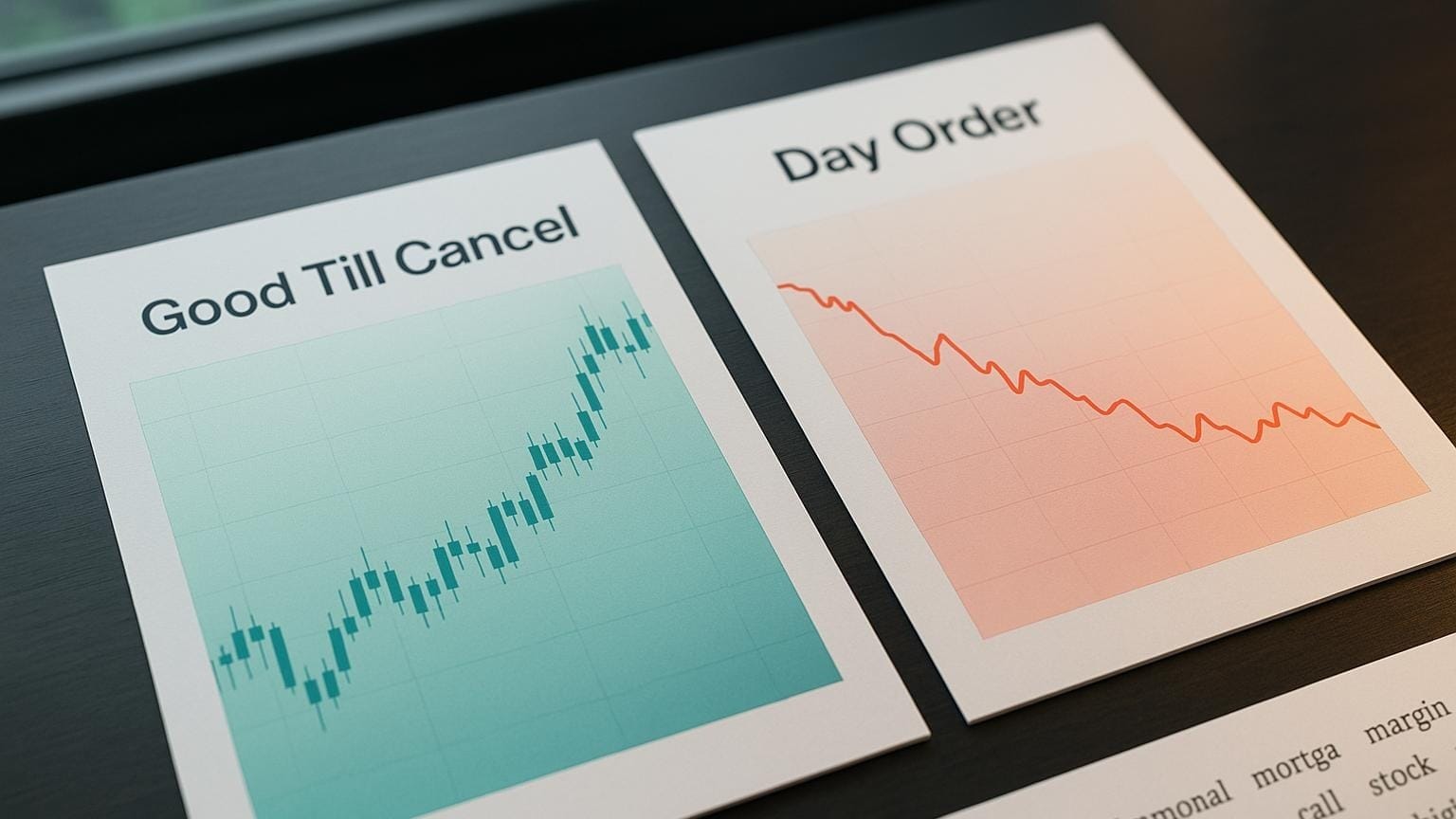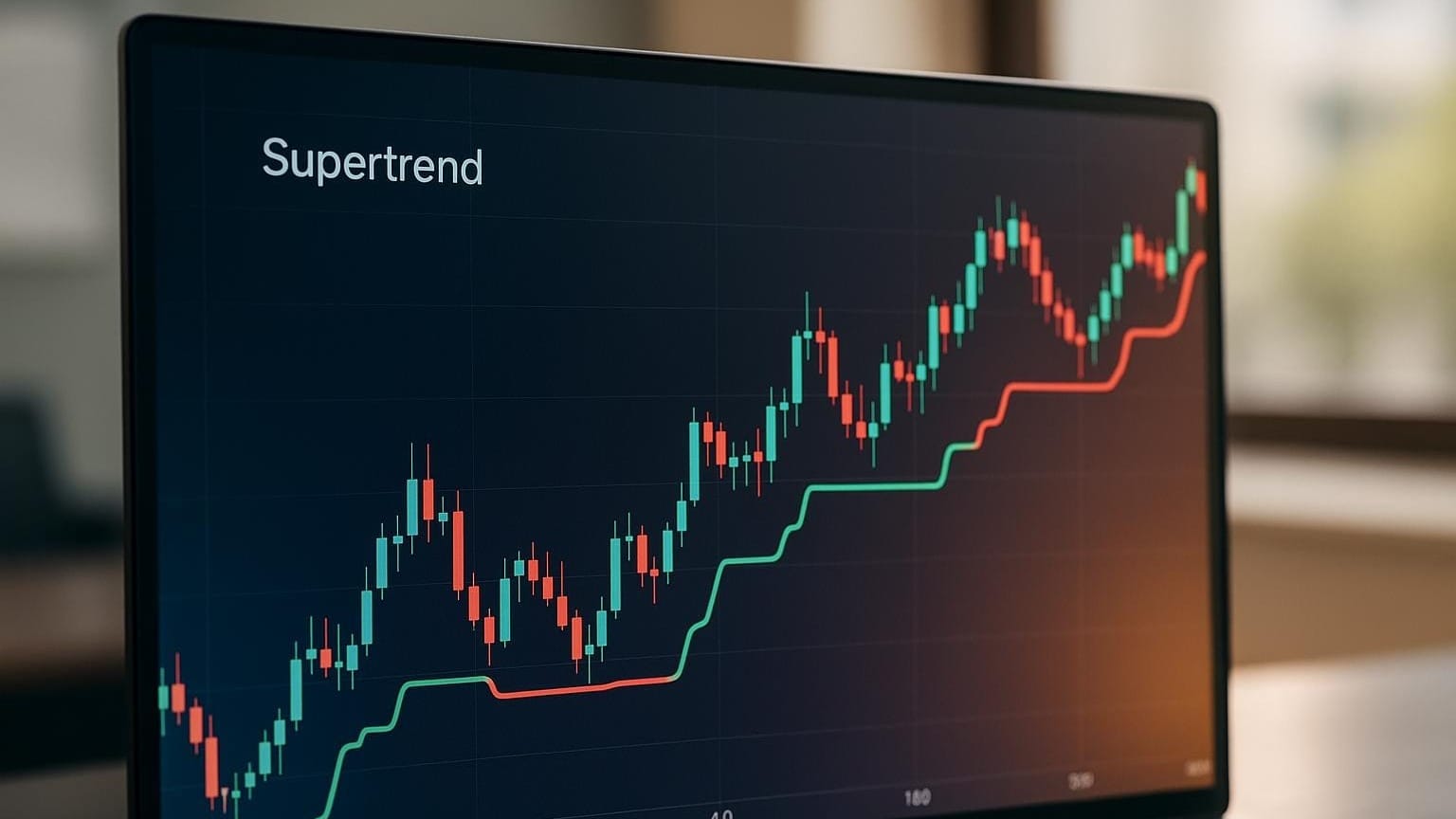Explore the differences between Good Till Cancel and Day Orders to find the best trading strategy for your style and risk tolerance.
When trading, choosing between Good‑Til‑Canceled (GTC) and Day Orders depends on your strategy, time commitment, and risk tolerance. Here’s a quick breakdown:
- GTC Orders: Stay active until executed or canceled (or for a broker‑defined period, often 30–90 days). Ideal for long‑term strategies where you set a specific price target and wait for the right market conditions. For a formal definition, see Good ’Til Canceled orders.
- Day Orders: Valid only for the current trading session and expire at market close. Best for short‑term traders focused on intraday price movements and avoiding overnight risks (see day orders explained).
Quick Comparison:
| Feature | GTC Order | Day Order |
|---|---|---|
| Duration | Active until executed, canceled, or expires | Expires at the end of the trading day |
| Best For | Long‑term strategies with specific price goals | Short‑term trades and intraday movements |
| Risk Exposure | Exposed to market fluctuations over time | Limited to same‑day market activity |
| Monitoring | Requires occasional checks | Requires active daily monitoring |
Key Takeaway
- Use GTC Orders if you prefer a hands‑off approach for long‑term targets.
- Choose Day Orders if you actively monitor the market and focus on same‑day opportunities.
Now, let’s dive into how each works, their pros and cons, and examples of when to use them.
Good‑Til‑Canceled vs. Day Orders: Which Is Better? 🔰
Good‑Til‑Canceled (GTC) Orders: How They Work
Good‑Til‑Canceled (GTC) orders remain active beyond a single trading session until they are either executed, canceled, or expire based on your broker’s policy.
GTC Order Mechanics
A GTC order remains in effect until it is completed, manually canceled, or expires according to the broker's rules. You specify the security, the number of shares or units, the desired price, and choose a time‑in‑force of “GTC.” Note: the NYSE stopped accepting GTC orders on its exchange book in 2016, but most brokerage platforms still implement GTC internally and route/manage them accordingly. For strategy ideas that benefit from pre‑defined targets, see LuxAlgo’s free Targets for Many Indicators and Targets for Overlay Indicators.
Benefits of GTC Orders
The main appeal of GTC orders is convenience and automation. They save you from re‑entering orders daily—useful when managing multiple positions or waiting for price levels that may take days or weeks. For example, you could set a GTC order to buy 100 shares of Affirm at $40.00. If price reaches that level, the order executes automatically. If you’re exploring rules‑based entries and exits, LuxAlgo’s S&O Backtester and Backtester docs can help you test target/stop logic before placing live orders.
GTC orders can also capture opportunities outside regular trading hours. Markets often see meaningful moves in pre‑market and after‑hours sessions; a primer on this is after‑hours trading. For swing traders, pairing GTC orders with tools that map dynamic support and resistance or S/R breaks helps align entries and targets with structure.
GTC Order Risks and Downsides
GTC orders can trigger during market gaps or sharp volatility—executing when conditions briefly touch your price. There’s also the risk of forgetting open orders. For instance, a trader who bought ACADIA Pharmaceuticals (ACAD) at $21.50 might place a GTC sell at $27.00. Unforeseen news could make that target sub‑optimal, and unfilled GTC orders can tie up buying power. To mitigate risk, review open orders regularly and consider stop‑loss/TP logic in backtests and real‑time structure from S/R Classification.
Day Orders: How They Work
Day orders automatically expire at the end of the trading session if not executed. They’re the default on many platforms and fit intraday strategies.
Day Order Mechanics
A day order instructs your broker to execute at a specified price during the current session; if it doesn’t fill by the close, it cancels automatically. These can be market or limit orders. For example, a day order to buy 200 shares of Apple at $185.50 fills only if that price prints during the session.
Most platforms default to day orders unless you select otherwise, which supports short‑term decision cycles and post‑close resets. If you want structure around intraday levels, see LuxAlgo’s Opening Range with Breakouts & Targets.
Benefits of Day Orders
Day orders suit intraday trading, allowing quick reactions to headlines and price swings. A key benefit is avoiding overnight risk because orders expire at the close. For building a disciplined routine, you can reassess each morning and re‑place orders aligned with your plan. To time entries around structure, LuxAlgo’s Price Action Concepts (PAC) and Signals & Overlays (S&O) provide actionable levels and signals.
"Day orders are the pulse of short‑term strategies, keeping you nimble and in the driver's seat." — Tyler Corvin, Senior Trader
Day Order Risks and Downsides
The drawback is short duration: if your target needs more time, you must re‑enter the order. Liquidity can thin near the close, causing missed fills even if price tags your level—see a primer on liquidity. Day orders also demand attention; without monitoring, swift moves can slip by. Using limit orders and predefined stops helps manage slippage and risk.
GTC vs. Day Orders: Key Differences
GTC vs. Day Orders Comparison Chart
Here’s a side‑by‑side look at how these order types differ:
| Feature | Day Order | GTC Order |
|---|---|---|
| Duration | Valid only for the current trading day | Stays active until executed or manually canceled (subject to broker limits) |
| Expiration | Automatically expires at the market close | Expires when filled, canceled, or after a broker‑defined period (often 30–90 days) |
| Best Use | Intraday trading and same‑day moves | Long‑term strategies with specific price targets |
| Monitoring | Requires daily review | Needs periodic checks to ensure conditions remain relevant |
| Risk Exposure | Reduces exposure to after‑hours fluctuations | Exposed to extended‑hours volatility |
| Market Conditions | Works well in volatile, news‑driven sessions | Suited to stable trends and well‑defined structures |
Takeaway: Day orders reset each session, while GTC orders persist across sessions—better for longer horizons if monitored.
Choosing Between GTC and Day Orders
Match order type to goals and availability. If you trade intraday and can watch the market, day orders provide control. If you prefer to set targets and step away, GTC orders help—but review them as conditions evolve. If you need help finding rules that fit your style, try LuxAlgo’s AI Backtesting Assistant or read the introduction and strategy‑fetching guide.
Trading Examples: GTC and Day Orders in Action
Breakout Trading with GTC and Day Orders
GTC orders are effective for breakouts that develop over time. Imagine a swing trader focused on Tesla (TSLA), aiming to buy at a key resistance near $250. Using dynamic S/R or break signals to map levels, a GTC limit can capture the breakout whenever it happens.
For fast, news‑driven breakouts (e.g., biotech on fresh 8‑K disclosures), day orders let you act within the same session. When volatility spikes, consult tools like FVG mitigation signals or IFVG to refine timing.
Risk Management with Order Types
Order type affects risk management. For longer‑term positions, you can pre‑define exits. In testing, the TP/SL module (S&O Backtester) shows how fixed targets and stops behave across markets. To reduce volatility surprises, pair structure (e.g., IFVG zones) with protective stops.
Day orders help limit overnight risk since they expire at the close. For intraday control around liquidity and momentum, see Oscillator Matrix (OSC) and related scanner tools like OSC Screener.
Conclusion: Matching Order Types to Your Trading Style
Choosing between GTC and day orders comes down to your timeframe, monitoring capacity, and risk tolerance. Day orders are great when you need agility and want to avoid after‑hours surprises. GTC orders fit set‑and‑review approaches—but they demand periodic checks so targets stay relevant. If you’d like to prototype rules first, use AI Backtesting to generate strategies and then validate details in the docs.
Also confirm how your broker handles GTC expirations and extended‑hours fills. The NYSE elimination of exchange‑book GTCs means most “GTC” behavior is broker‑managed. Regularly review open orders to keep them aligned with your plan.
FAQs
How do I choose between a Good‑Til‑Canceled (GTC) order and a Day Order for my trading strategy?
When deciding between a GTC order and a Day Order, it comes down to strategy and risk tolerance. A GTC order remains active until it’s executed or canceled—suited to “set and review” tactics. A Day Order expires at the close—better for intraday styles. To ground targets and stops in structure, explore LuxAlgo’s Indicator Library and trading strategy guides.
How can I reduce the risks of market gaps and unexpected trades with GTC orders?
Use precise limit prices and pair GTC entries with stop‑losses. Backtest combinations using the S&O Backtester and review TP/SL behavior. Monitor news flow and adjust orders when structure changes—resources like dynamic S/R can help you reassess levels.
What are the best strategies for using Day Orders to maximize intraday trading profits while managing risks?
Define risk first (position sizing and stops), then use limit orders around planned levels. LuxAlgo’s S&O and PAC can frame intraday bias, while OSC tracks money flow and divergences. For timing around session structure, see Opening Range with Breakouts & Targets.
References
LuxAlgo Resources
- Indicator Library
- Targets for Many Indicators
- Targets for Overlay Indicators
- Support & Resistance Dynamic
- Support & Resistance Levels with Breaks
- Backtester (S&O)
- Backtester (S&O) — Introduction
- Backtester (S&O) — Take Profit & Stop Loss
- Price Action Concepts (PAC)
- Signals & Overlays (S&O)
- Oscillator Matrix (OSC)
- OSC Screener
- FVG Instantaneous Mitigation Signals
- ICT Implied Fair Value Gap (IFVG)
- AI Backtesting Assistant








